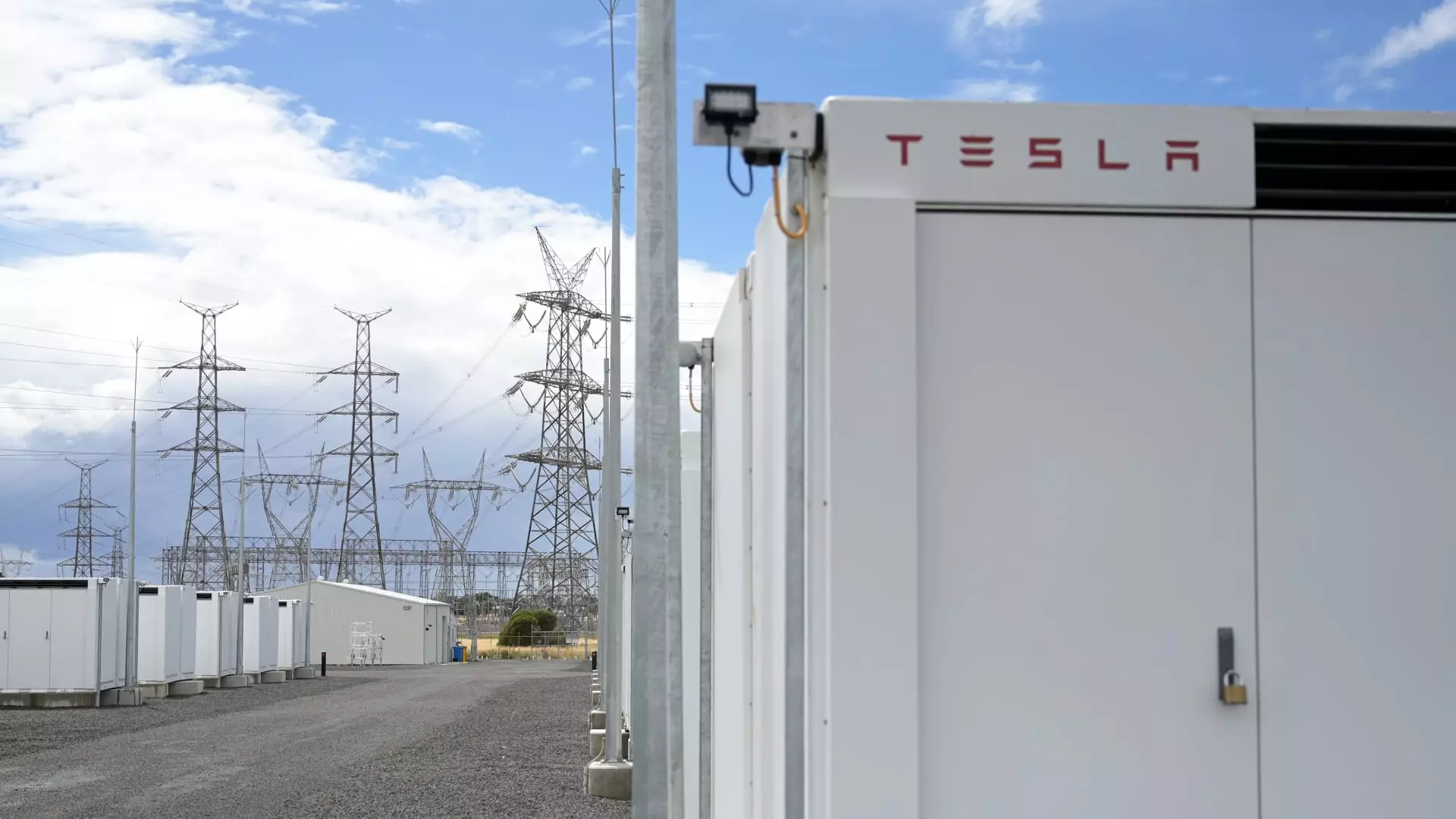Tesla’s recent announcement about its $556 million deal to create a grid-scale battery plant in China is not just another chapter in the company’s narrative; it is a bold statement amid challenging geopolitical circumstances. As the U.S. grapples with a complex relationship with China, Tesla’s leap into this partnership is emblematic of its trust in the long-term viability of the Chinese market. This endeavor marks the largest of its kind, showcasing Tesla’s ambition to lead the charge in sustainable energy solutions at a time when energy demand is evolving rapidly.
Exploiting the vast Chinese market, Tesla’s decision can raise eyebrows in political circles but cannot be ignored as a part of an intricate dance that transcends mere commerce. This isn’t just about batteries; this is about energy independence and technological leadership. The megatrend toward clean energy solutions would be foolish to dismiss, and Tesla is positioning itself as a key player by investing heavily in this space.
The Megapack Revolution
Tesla’s Megapack, the crown jewel of this project, represents a significant stride in utility-scale energy storage. Each unit has the capacity to provide 1 megawatt of power for four hours, functioning as an essential regulator within urban electricity grids. This capability is critical given the increasing volatility in energy supply caused by renewable sources like wind and solar. The utility-scale energy storage systems will serve as a stabilizing force, balancing supply and demand in a sophisticated dance that urban environments require to thrive.
The global energy landscape is changing, and Tesla is keenly aware that those who invest in energy storage now will dictate the terms of energy security in the future. With every Megapack produced, Tesla moves closer to not just participating but influencing the global energy narrative.
The Competitive Landscape
However, Tesla’s ambitions in China are not without challenges. The formidable local competition, primarily CATL and BYD, commands 40% of the global battery market share and has been making significant strides in both technology and production capabilities. While Tesla has an edge in branding and innovation, the established networks and local understandings of Chinese firms present substantial barriers to dominance within this highly competitive industry.
Moreover, the necessity of collaboration is evident. Tesla’s dependency on CATL for battery cells and packs underlines a nuanced reality: even in a blue ocean of potential, strategic partnerships will define Tesla’s trajectory in China more than outright competition. This dynamic reveals that being a market leader does not solely depend on technological prowess but also on leveraging local expertise and strategic alliances.
Geopolitical Implications
The implications of Tesla’s deal extend far beyond profits. As the trade tensions between Washington and Beijing continue to simmer, Tesla’s move raises questions about the durability of U.S. leadership in technology and clean energy. Herein lies an opportunity to rethink American competitiveness — it is essential for the U.S. to embrace collaboration rather than viewing every trade as a zero-sum game.
The partnership indicates a shift toward cooperation, which runs counter to the prevailing narrative of economic nationalism. By engaging with China in this manner, Tesla is demonstrating that energy independence should supersede short-term political posturing. The trade war has provided a fertile ground for dialogue, suggesting that U.S. firms can thrive should they look beyond borders.
The Future of Energy Storage
According to the International Energy Agency, the capacity for global battery energy storage systems surged by 42 gigawatts in 2023 — nearly doubling the growth from the previous year. This surge indicates an unprecedented market demand that Tesla is poised to meet with its strategic investments. China is setting ambitious targets, and by aligning itself with these goals, Tesla can both influence and benefit from China’s energy future.
Ultimately, Tesla’s battery project in China is not just about building infrastructure; it’s a strategic maneuver that redefines energy storage on a global scale. Its success could pave the way for a new era of energy dynamics, transitioning from traditional reliance on fossil fuels to a future that emphasizes renewable energy as a cornerstone of economic growth and national security. This venture encompasses not only technological advancement but also a vision that transcends political boundaries, redefining the driving forces behind global energy strategies for years to come.

